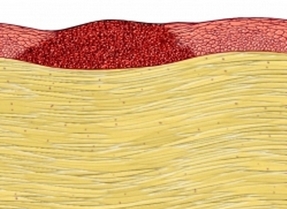Seborrheic keratoses – A benign tumor of the skin
Description of seborrheic keratosis
Seborrheic keratoses – good (noncancerous) growth on the skin. Seborrheic means greasy (although often not fat build-up), and keratosis means thickening of the skin. The growths arise The upper layer of the skin and can look like warts. But they do not extend deep into the skin and do not contain viruses, that cause warts.
Seborrheic keratoses are not contagious, It does not apply and does not turn into cancerous tumors. Thus, it does not threaten health. But it can cause irritation or aesthetic discomfort.

Reasons for seborrheic keratosis
The direct cause of seborrheic keratoses is unknown. However found, it does not appear under the influence of sunlight.
Risk factors of seborrheic keratosis
Risk factors include:
- Age more 40 years;
- The presence of close family members with seborrheic keratosis.
The symptoms of seborrheic keratosis
Seborrheic keratoses:
- It may be located anywhere in the body, but usually appears on the chest, trunk, face, shoulders, or back;
- Usually, It has a yellow, brown or black;
- Elevated above the skin surface;
- The texture can be rough or wart-like;
- It may take the form of a drop of mud or clay, adhering to the skin;
- Usually, It has a circular or oval shape;
- It may be in the form of one or more excrescences;
- May be itchy;
- Perhaps annoyed clothing or jewelry, and also may bleed after rubbing.
Diagnosis of seborrheic keratosis
Because seborrheic keratoses sometimes takes the form of dark spots, it may be difficult to distinguish from pigmented lesions, prone to degenerate into cancer. Thus, it is important to ensure, tumors that are seborrheic keratoses. Doctor, usually, can make an accurate diagnosis when viewed from the build-up on the skin, but if necessary, it can be made skin biopsy.
Treatment of seborrheic keratosis
Because seborrheic keratoses do not pose a threat to health, treatment is usually not required. But, If the focus of seborrheic keratoses become irritated, or affect the appearance, these may be removed.
Treatment includes:
Medications for the treatment of seborrheic keratosis
Alpha-hydroxy lotions or mild steroid creams can help relieve itching and irritation.
Krioxirurgija: Remove after freezing
To freeze and destroy the cells of seborrheic keratosis liquid nitrogen. After the procedure, the skin forms a crust, which subsides after a few days. The skin may be slightly posvetlet and it may leave a small scar.
Surgical removal: scraping or cutting
A doctor can use a scalpel or razor, to remove the hotbed of seborrheic keratoses. After the procedure on skin there are small scars.
Laser removal of seborrheic keratosis
The growths may be burned by a laser (rarely used procedure).
